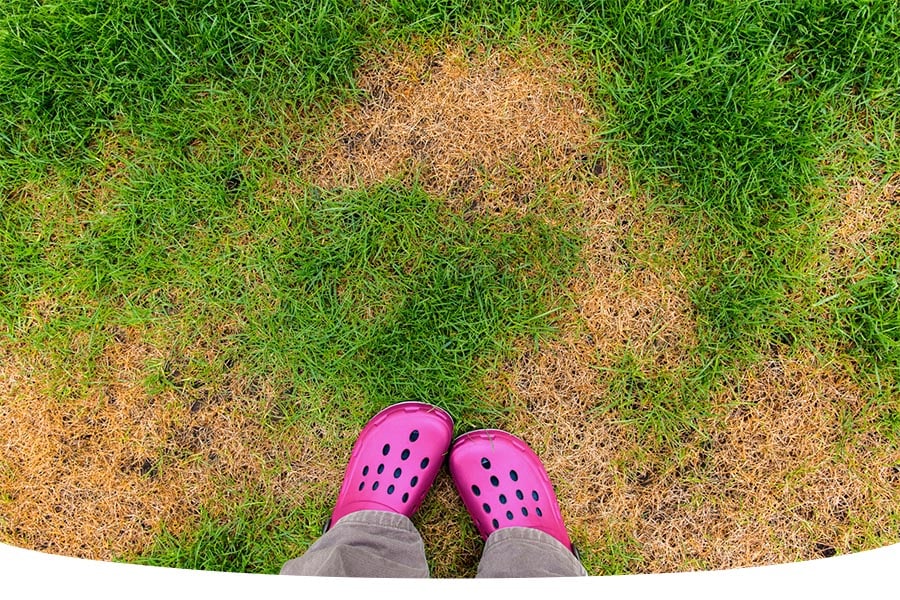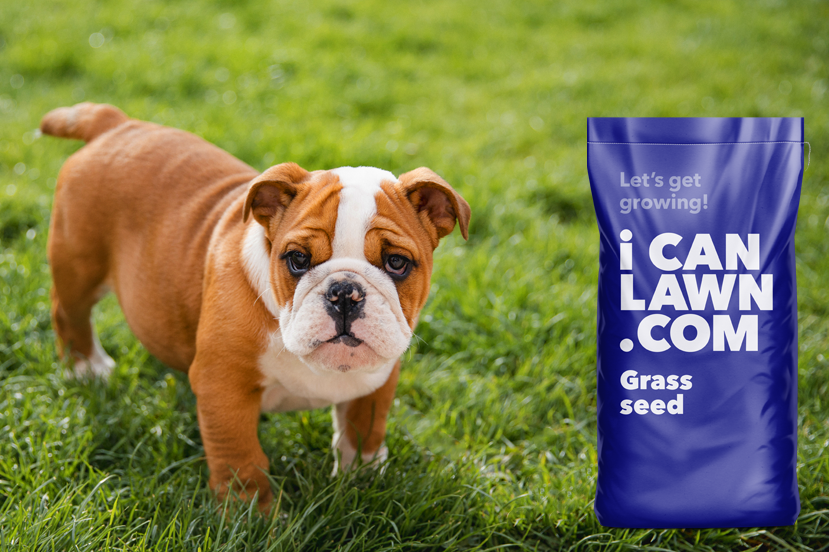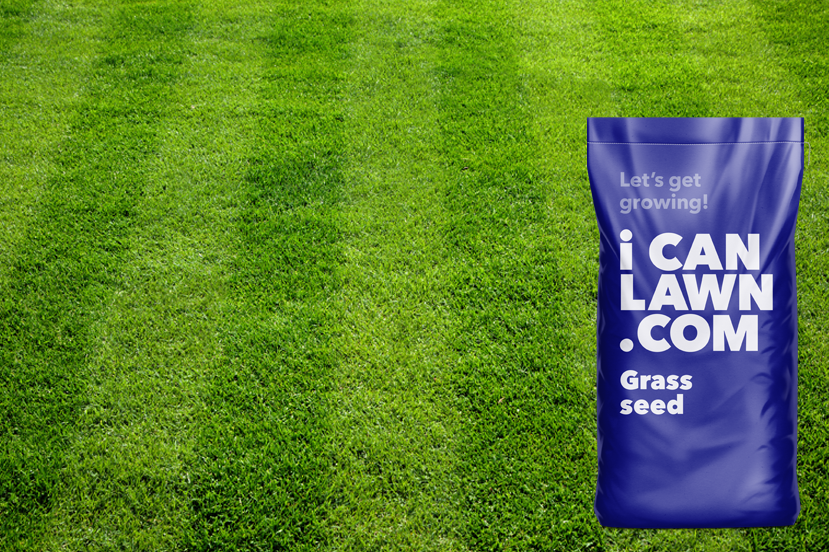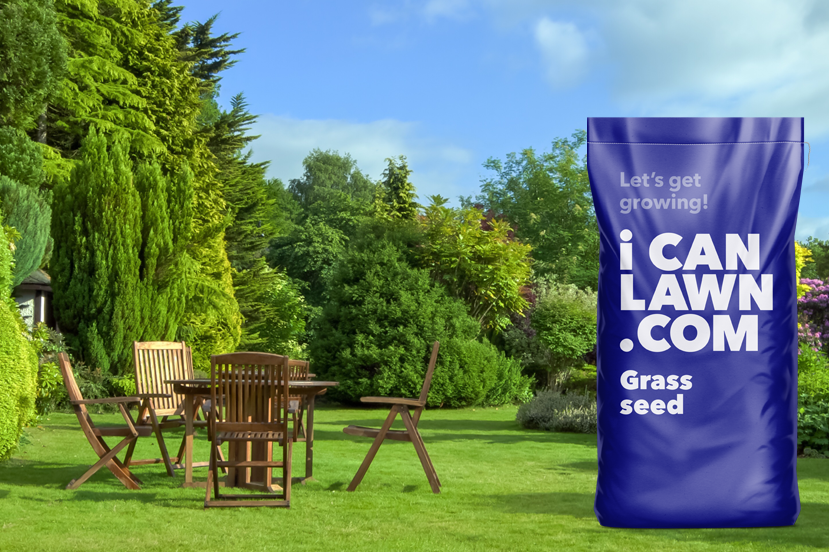5 common lawn problems and how to solve them
Every person who cares for a lawn will know that it is a labour of love that sometimes presents the odd problem, leaving you stumped on how to solve it!

Luckily for you, we know all the common lawn problems that most lawn owners will face, and better yet – we know exactly how to solve them!
Dogs
Here at icanlawn.com HQ, we absolutely love our pooches, but we also know that they can do real damage to our lawns. Whether it be their radioactive wee that causes burnt patches or just their general rugby diving up and down our lawns!
Of course, it’s not their fault, but it may leave you more than less impressed with the condition of your grass. Contrary to popular belief, female dog wee is not any worse than males. It is, in fact, the female’s squatting style that causes more damage than the male's spraying method!
Despite this, any dog urine on your lawn will have an adverse effect. Your best way of preventing this is to water any spots that may have been urinated on. Instead of burning your lawn, the nitrogen that is active in their urine will feed it and turn your grass very green when diluted with water. If you have left it too late and are sporting the green and yellow polkadot lawn look, you can remove the damaged grass and reseed with a super hardy mix.
Choosing the right seed helps fight the effects of wear & tear
Likewise, a lawn that is full of hardwearing and fastgrowing grass seeds is better equipped to put up with all the ‘ruff’ and tumble that comes with the pleasure of owning a pet. Our Tough Stuff Lush Lawn is our toughest mix, that also produces an incredibly luscious lawn. If you want to learn how to sow a new lawn, or overseed an existing one – make sure to visit our How to Hub.
Shade
Many lawns experience shade, whether it is a light shade that moves across the lawn throughout the day or a heavier shade that seems to never leave! Whilst shade can be irritating enough when it comes to your sunbathing, it can be particularly frustrating when your grass simply refuses to grow there.
Overcoming the effects of shade on your garden lawn
To solve this issue, you could remove the objects that may be causing the shade – but if you’re rather fond of your fence, trees, hedges or shrubs – then you may just want to try our next best solution – overseeding! Believe it or not, only certain types of grass seed can grow in shady conditions. Our Shade Supreme Lawn mix is made up of all those seeds that not only love the sun but can also tolerate any shade your lawn will throw at it. If you need to work out how much you seed you need for your lawn, make sure to use our handy Product Calculator.
Clay soils
Clay soils are notorious for turning many a lovely lawn into an unruly mud pit! Although clay soils can appear just about anywhere, they are typically prominent in new build homes where top soil hasn’t been added to improve the lawns overall composition. This, combined with poor drainage or no drainage, really does turn the lawn of your dreams into quite the nightmare.
Just like there are seeds that can grow in the shade, there are ones that are great at growing in the difficult conditions that clay soils present! During winter and thanks to our UK weather, clay soils become boggy, muddy and wet – and during summer, they become incredibly hard, cracked and dry. This means you need some pretty hardy seeds that can put up with these two extremes! Look no further than our New Build Dream Lawn, which has all the seeds you need to turn that muddy nightmare into a total dream!
Yellowing
Yellowing in your lawn can be a sign of a few different factors. The most obvious sign is that your lawn simply needs a feed! Just like other plants and flowers in your garden, your lawn needs feeding too – and when it’s hungry, it’ll let you know by looking a little pale and yellow. The good news is now is a great time to feed your lawn!
To keep your lawn fed for longer and throughout the summer, make sure to use our All Summer Long feed that will steadily green up your lawn over 16 weeks. If you need a quicker fix, our Oh So Green will have your lawn looking Insta-worthy in only six weeks! You can learn how to feed your lawn in our lawn feeding guide.
What else can cause my lawn to turn yellow?
Overfeeding!
Yellowing can also be a sign of overfeeding / fertiliser burn, so make sure to always use the recommended spreading rate for your lawn food of choice. Bad mowing can also make some of your grass blades turn yellow.
Not mowing at the right height
It is important to mow at the correct height for your lawn (20-40mm for a lawn that gets a lot of use, 10-20mm for a fine ornamental lawn) and to ensure that your mower blades are always sharp. You can find more information on our best mowing tips in our mowing guide.
Overwatering your lawn
Our regular rain does an excellent job of keeping our lawns watered for most of the year, but it is possible to over water your lawn! Have you ever overwatered a house plant and noticed the leaves begin to turn yellow? Well, the same thing will happen to your grass. Likewise, if your garden floods easily and your grass is submerged in water for a long period of time, it will begin to suffocate. The easiest way to avoid these becoming issues in your lawn is to know how to water your lawn correctly and to assess the level of your lawn. If there are dips in your lawn this is where water will gather, so you may want to level these areas out with top soil.
Common garden lawn pests
Lastly, the most unfortunate yellow grass diagnosis can be pests. Leatherjackets and chafer grubs can live beneath your soil and eat at the roots of your grass, causing it to die and turn yellow. Whilst a good lawn care regime can help a little towards keeping these monstrous mites at bay, your best bet to get rid of them is to use the appropriate nematode.
Thinning / Patches
Thinning and patchiness are normal occurrences in any well-loved and well-used lawn but is thankfully easily cured! Overseeding your lawn seasonally (once in autumn, once in spring) can help this become less of an issue and ensure that your lawn looks great all year round.
The solution is overseeding
The process of overseeding also encourages us to remove any weeds or moss that have been building up. Feeding your lawn regularly can also help to thicken up any thinning grass, a long lasting feed in summer and winter will cover your lawn for the entire year, and if you need any boosts inbetween our 6 week feeds are the ultimate quick fix solution.
As you can see, most lawn care issues can be easily solved with a bit of know-how, some DIY and the establishment of a regular lawn care routine!
Check out our other full guides for further advice:











